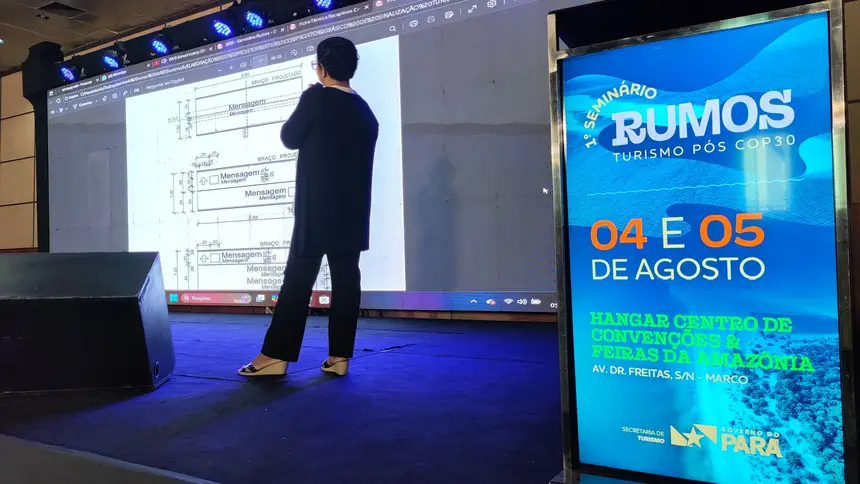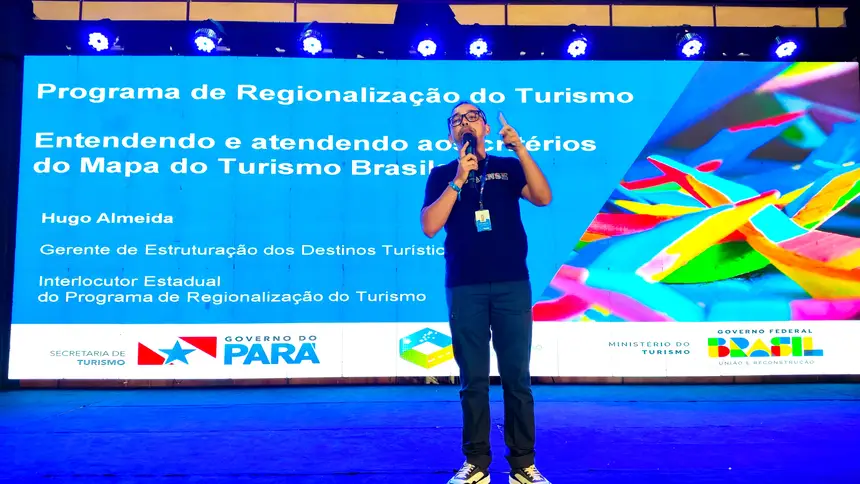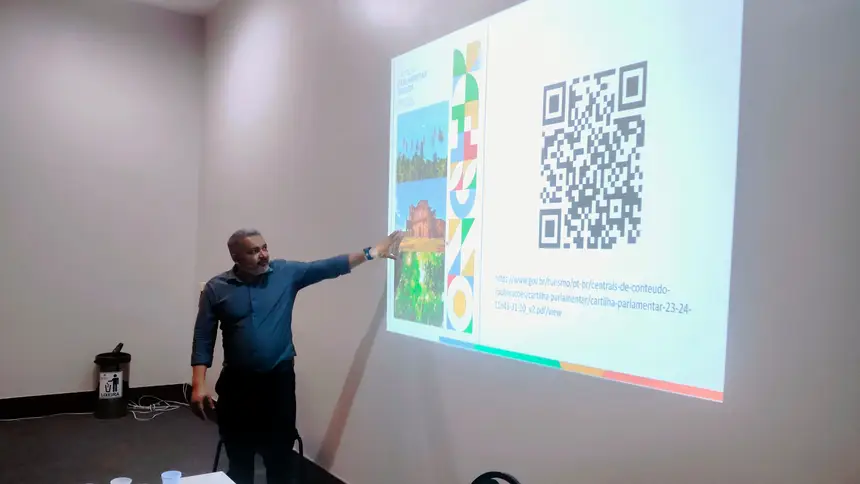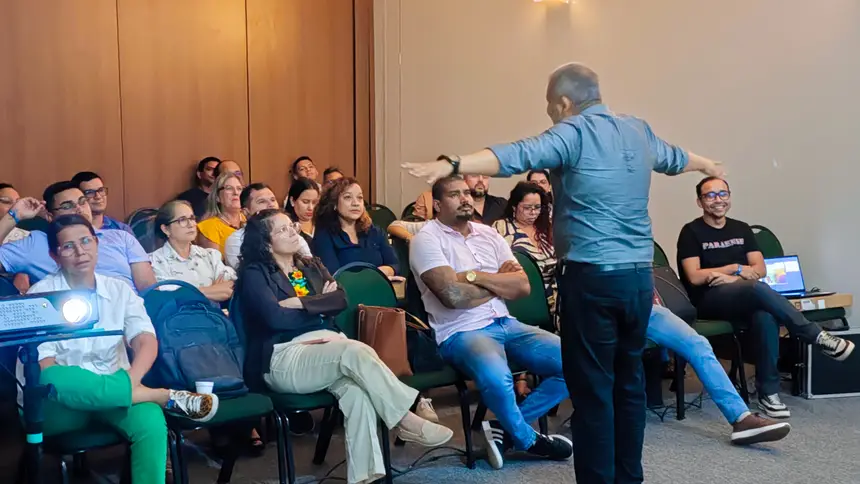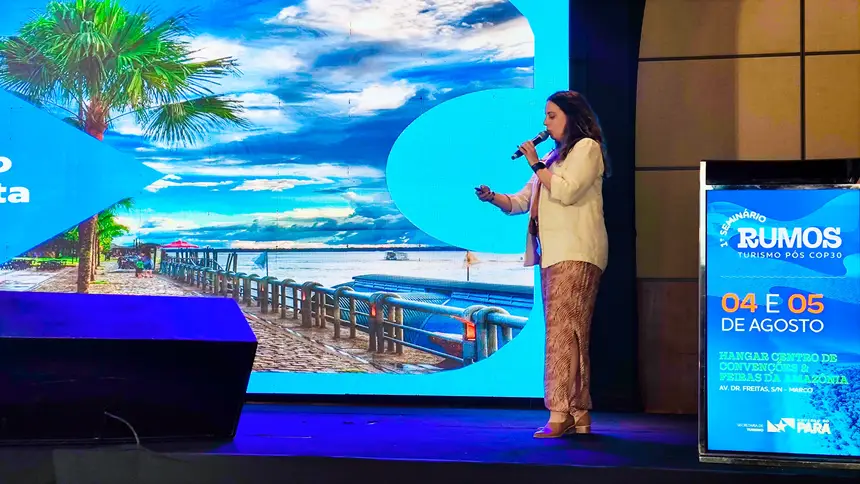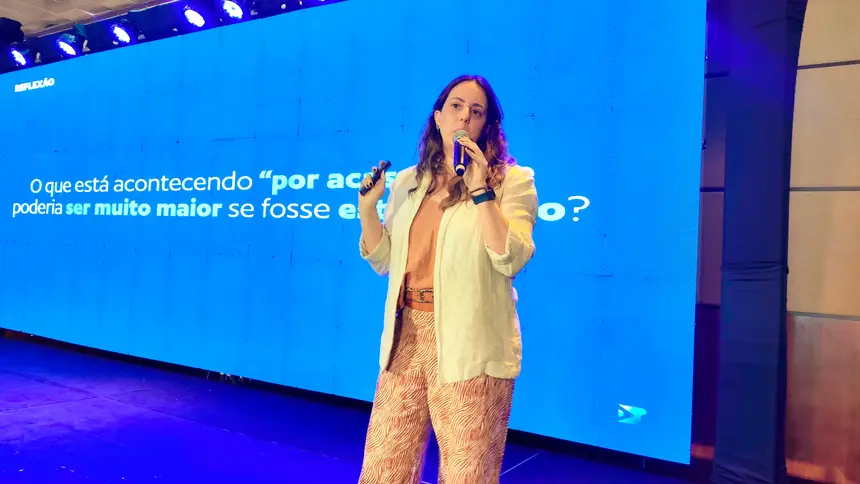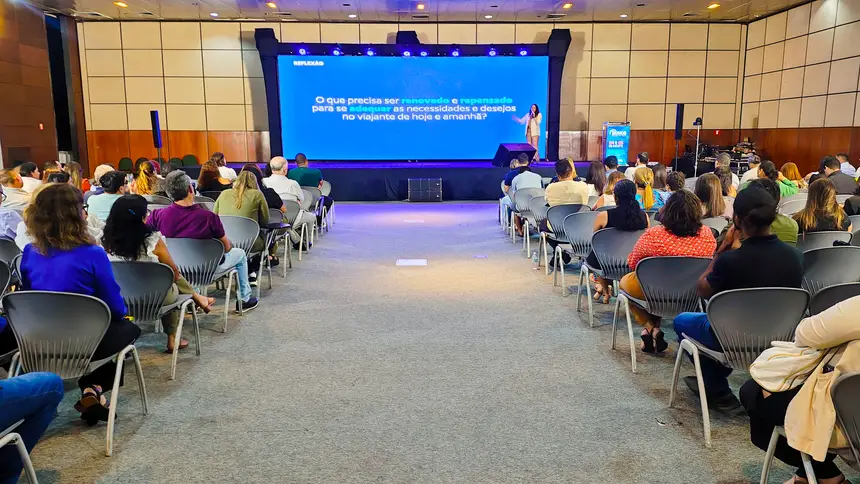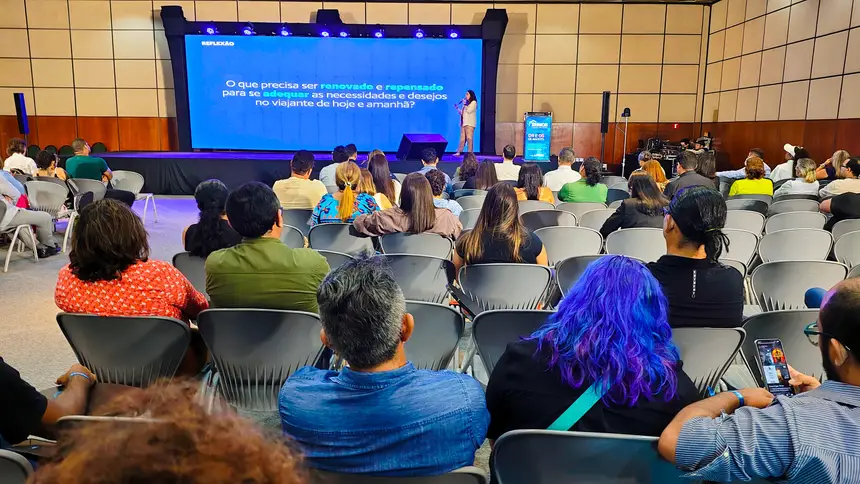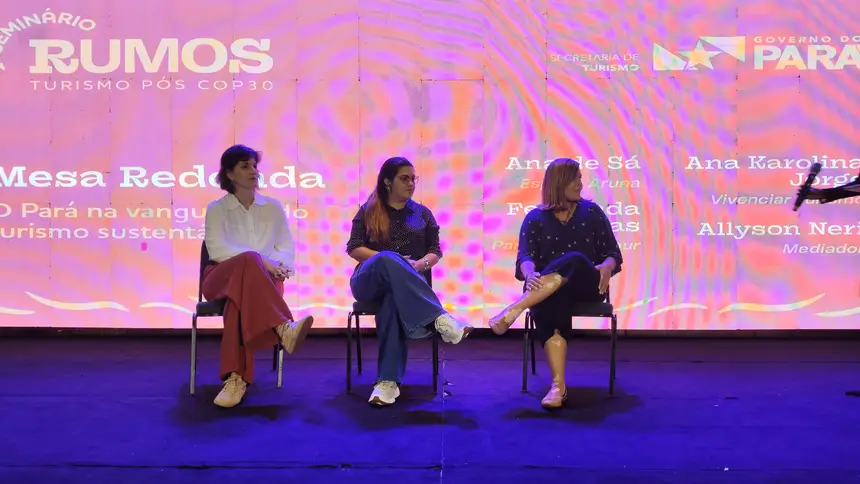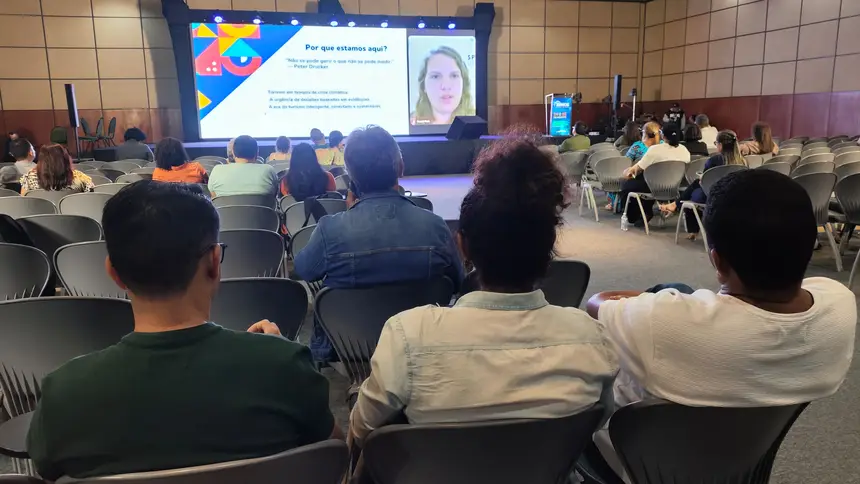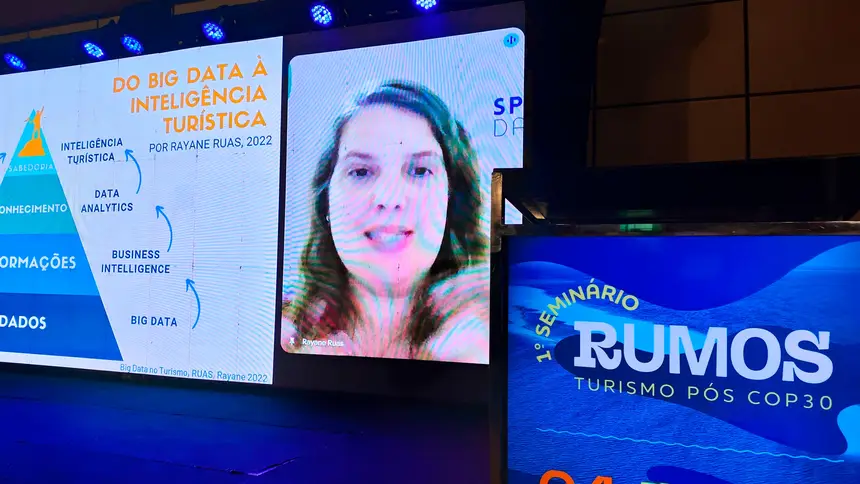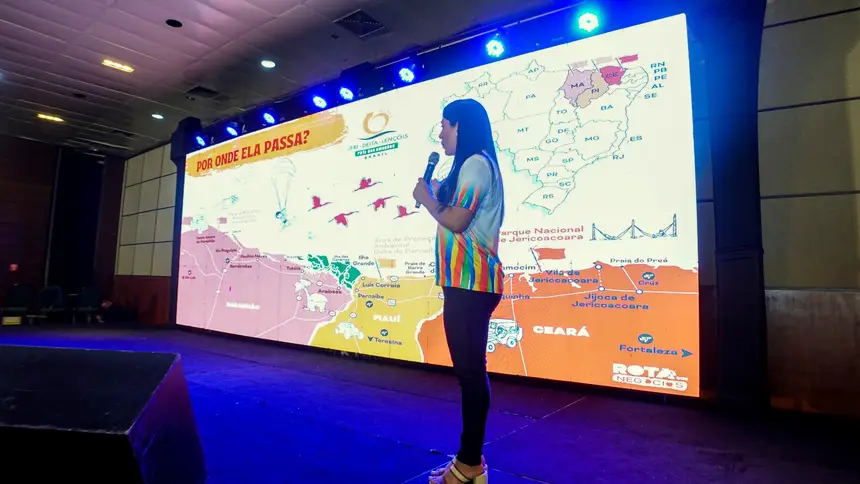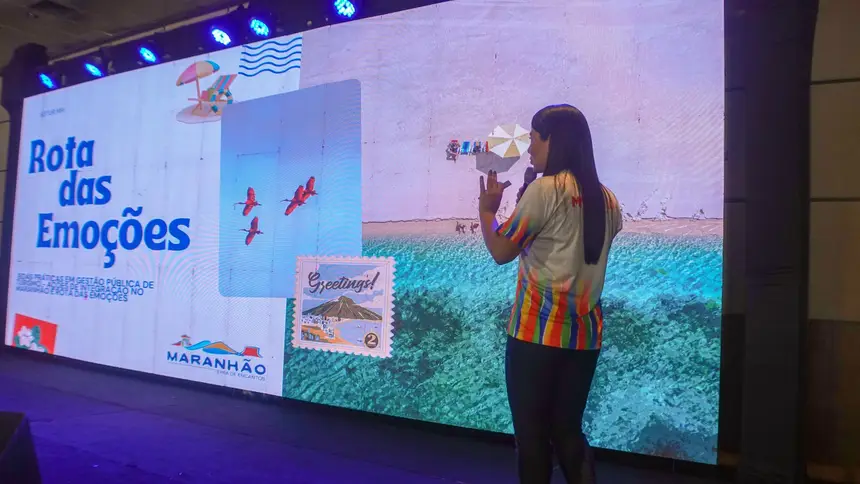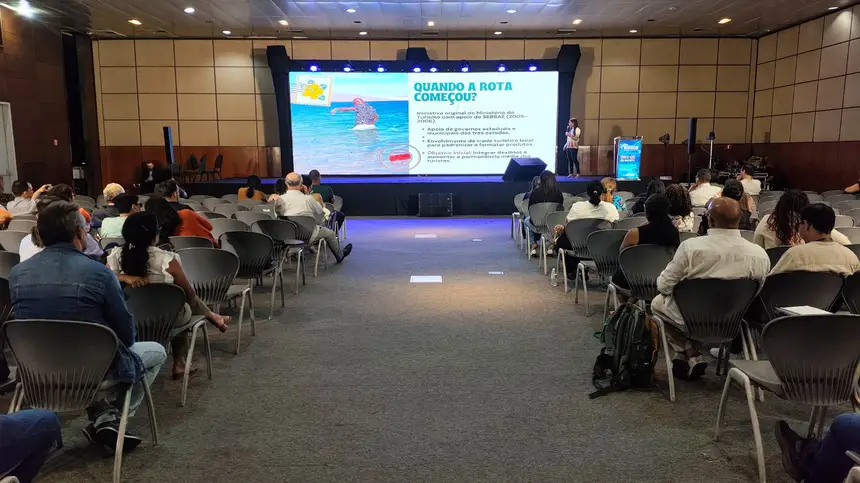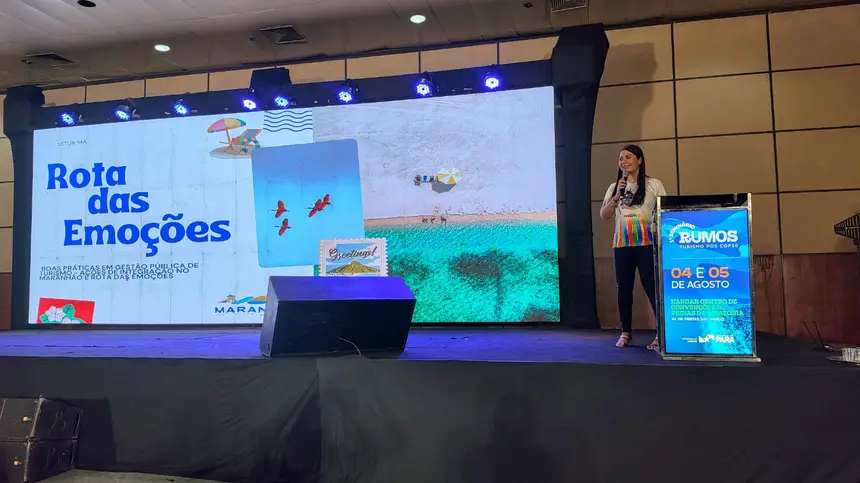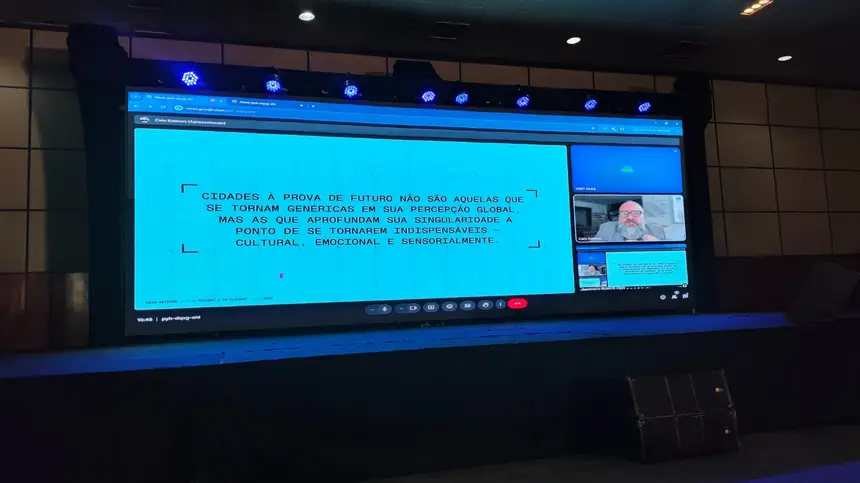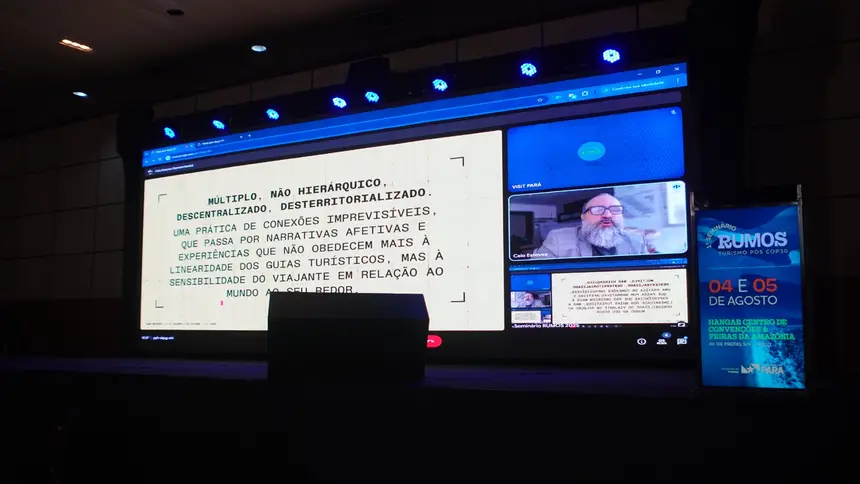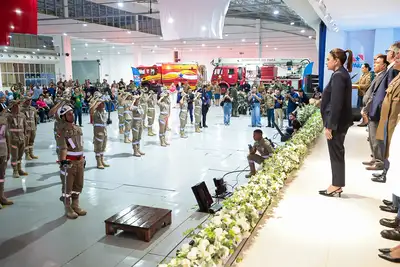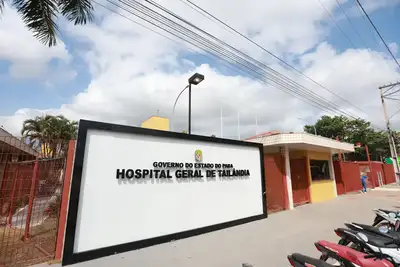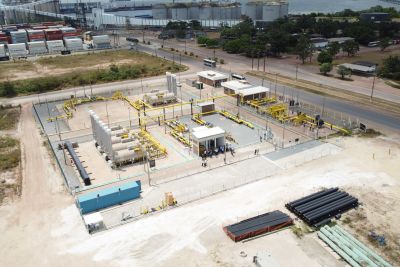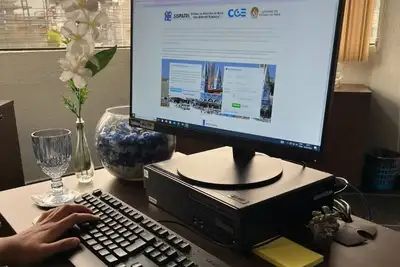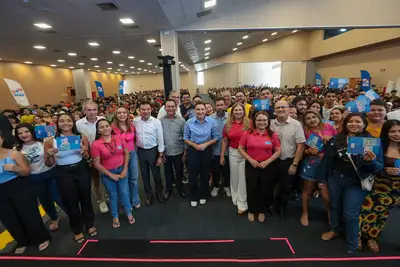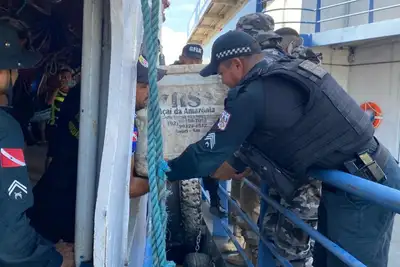RUMOS Seminar discussed trends, consumer profile, fundraising, and tourism promotion in Pará
The event addressed strategies to boost the tourism sector, highlighting public management and opportunities for COP30
The RUMOS Seminar – Post-COP30 Tourism, promoted by the State Tourism Secretariat (Setur), brought together specialists and managers at Hangar - Amazon Convention & Exhibition Center in Belém to outline strategies for strengthening tourism in Pará. With a focus on trends, consumer profile, destinations, and data intelligence in the first two days, the program included discussions on public management planning in tourism and the international promotion of the State at the 30th United Nations Conference on Climate Change (COP30). The event, held this week, gathered public managers, community leaders, entrepreneurs, specialists, students, and professionals from the tourism trade.
In the opening lecture "Consumer Trends and the New Tourist Profile," the executive president of the Brazilian Association of Tour Operators (Braztoa), Marina Figueiredo, addressed the evolution of travel habits and the current consumer profile. According to her, today's travelers — and especially future ones — value genuine experiences that express the identity of the place and promote connections with local daily life and culture. "The tourist wants a real experience with the territory, with local daily life, with the culture that pulses in the communities," she stated.
Marina Figueiredo also highlighted Pará's potential to position itself in strategic niches, such as gastronomic, wellness, and luxury tourism (understood as exclusivity and personalization) and drew attention to the importance of inserting Amazonian products into tourism marketing channels. She emphasized that destinations that can translate the authenticity of their dishes, festivals, rituals, and natural environments into memorable experiences will be one step ahead. "It’s not enough to be amazing; it needs to be on the shelf. A destination needs to be found," she reinforced.
Identity and purpose are differentiators for the future
The panel "Developing Tourism Experiences with Amazonian Identity" highlighted the protagonism of initiatives that integrate local culture, creative economy, and community-based tourism. The mediator Márcia Bastos from Setur presented the projects Kayré Experiências, Casa da Luna, and Ygara Artesanal, emphasizing the importance of strengthening local productive chains and giving visibility to existing experiences. "Amazonian communities are already doing tourism," said the mediator, adding that "we are talking about tourism as a strategy of resistance and affirmation of our Amazonian identity."
Protagonism - Edilene Figueiredo from Kayré Experiências explained that the project's proposal is to offer immersion in the daily life of Combu Island (part of Belém), valuing local protagonism and avoiding the creation of artificial tourist characters. "The experience needs to be led by those who belong to the territory. That’s what guarantees authenticity," she emphasized. The pillars of the Kayré experience include gastronomy, handicrafts, cultural manifestations, and environmental practices, all carried out with active participation from local residents.
Isabella Barbosa, superintendent of Promotion, Marketing, and Events at Setur of Maranhão, shared the case of the Route of Emotions, a tourist itinerary that integrates three states — Maranhão, Piauí, and Ceará — over a distance of 900 kilometers, with a strong appeal of nature, culture, and adventure. According to her, the success of the Route lies in the governance among federal entities and the ability to format products with consistency, identity, and commercial appeal. "Regional integration is essential to strengthen tourism as a vector of development," she assured. The Maranhão executive explained that the Route of Emotions is sold nationally and internationally and serves as a model for the formatting of new itineraries in Brazil.
The architect and urban planner Caio Esteves proposed a reflection with the lecture "Future-Proof Tourism: how identity, hospitality, and foresight are reshaping the act of traveling." A specialist in Place Branding, he argued that essence and identity are the factors that sustain destinations in the face of global transformations, such as the climate crisis, digitalization, and changes in consumption. "Authenticity is the key. Identity is what makes the destination resilient and desirable," he stated.
Caio Esteves argued that the future of tourism will not be just about infrastructure or marketing, but about essence and purpose. For him, destinations that can translate their intangible attributes — such as hospitality, memory, belonging, and values — into real experiences will have a better chance of remaining relevant.
Invisible infrastructure - Rayane Ruas from Sprint Dados presented an approach to tourism intelligence based on evidence. The specialist spoke about Big Data, Business Intelligence, and Data Analytics, highlighting the relevance of Russell Ackoff's Knowledge Pyramid, which organizes the decision-making process into four levels: data, information, knowledge, and wisdom. "Data is a new invisible infrastructure of tourism. Just as we need an airport or hotel, we need reliable data," she stated.
According to her, tourism planning should be evidence-based, with predictive analysis and results evaluation capabilities. "We need to look at the past, understand the present, and plan for the future based on data. This triad is essential to prepare Pará for training, fundraising, and promoting tourism for COP30, and beyond," concluded Rayane Ruas.
Training and fundraising - The technical advisor of Setur, Solange Reis, conducted the workshop "Development of Tourism Projects," where participants learned about project structuring, funding sources, and the importance of bidding processes. The activity also included the practical development of a project, allowing participants to apply the concepts discussed.
The panel "Meeting the Criteria of the Tourism Map," led by the manager of Structuring Tourist Destinations at Setur, Hugo Almeida, detailed the guidelines and the importance of the Map for municipalities' access to federal public policies, highlighting those that were contemplated with actions. He explained how the policies of the Tourism Secretariat are decentralized to serve various locations, including Xinguara, in southeastern Pará, one of the municipalities farthest from Belém. "Currently, Pará is, proportionally, the third state with the highest number of municipalities included in the Map. We went from 20 to 81 municipalities between 2023 and 2025. This represents a significant achievement for tourism, with an instrument recognized as a good management practice," he pointed out.
With the mission of strengthening the technical capacity of public managers, the panel "Fundraising on the TransfereGov Platform" addressed effective ways to access federal resources. Gabriel Peixoto, a project development specialist, detailed the functionalities and modalities of public transfers available on TransfereGov, such as agreements, transfer contracts, and parliamentary amendments.
The training prioritized the importance of understanding the fundraising process and ensuring the effective application of resources. "No one learns to swim without first learning to float. The same happens here. It is necessary to understand the basics, how the pieces work, and only then can the municipality start to walk on its own, with autonomy and confidence," exemplified Gabriel Peixoto. For him, it is essential that managers understand the logic of the platform and invest in team qualification, so they know not only how to "ask" but also how to "execute."
Pavilion Pará - showcase for municipalities - In addition to technical training, the Government of Pará, through Setur, is preparing a major promotional action at COP30: the Pavilion Pará, an interactive tourist space that will be set up in the second week of the event, from November 17 to 21. The goal is to present to the world the cultural, gastronomic, and economic diversity of the State, promoting the image of Pará and creating concrete business, partnership, and investment opportunities for Pará municipalities.
Victor Lopes, marketing coordinator at Setur, explained that the proposal is to involve municipalities in promoting the State, encouraging everyone's participation in international visibility. "We want each municipality to have the chance to showcase the most beautiful and authentic aspects of its territory: local production, culture, tourism, and the creative economy. Additionally, we want to strengthen proximity tourism, encouraging the people of Pará to better know their State," he emphasized.
Another differentiator will be the integration with private sector agents, social organizations, universities, and influencers. The idea is to promote real connections between COP30 visitors, residents of Belém, and representatives from various Pará territories. "We want municipalities to feel like protagonists, and for this space to be a stage to showcase their riches to the world," added Victor Lopes.
The Pavilion Pará will feature thematic areas, such as a cultural stage, gastronomic space, podcast studio, social area, and an "Instagrammable" environment. "We will offer a complete structure, with visual personalization and standardized spaces of 16 square meters. Each municipality will be able to decorate its booth with its own identity, respecting the model defined by the organizing committee of the Pavilion," explained the coordinator.
The programming of the space will also include cultural presentations, discussion rounds, brand activations, and the commercialization of regional products. The food court will be a highlight, with local restaurants offering typical dishes from Amazonian cuisine.


